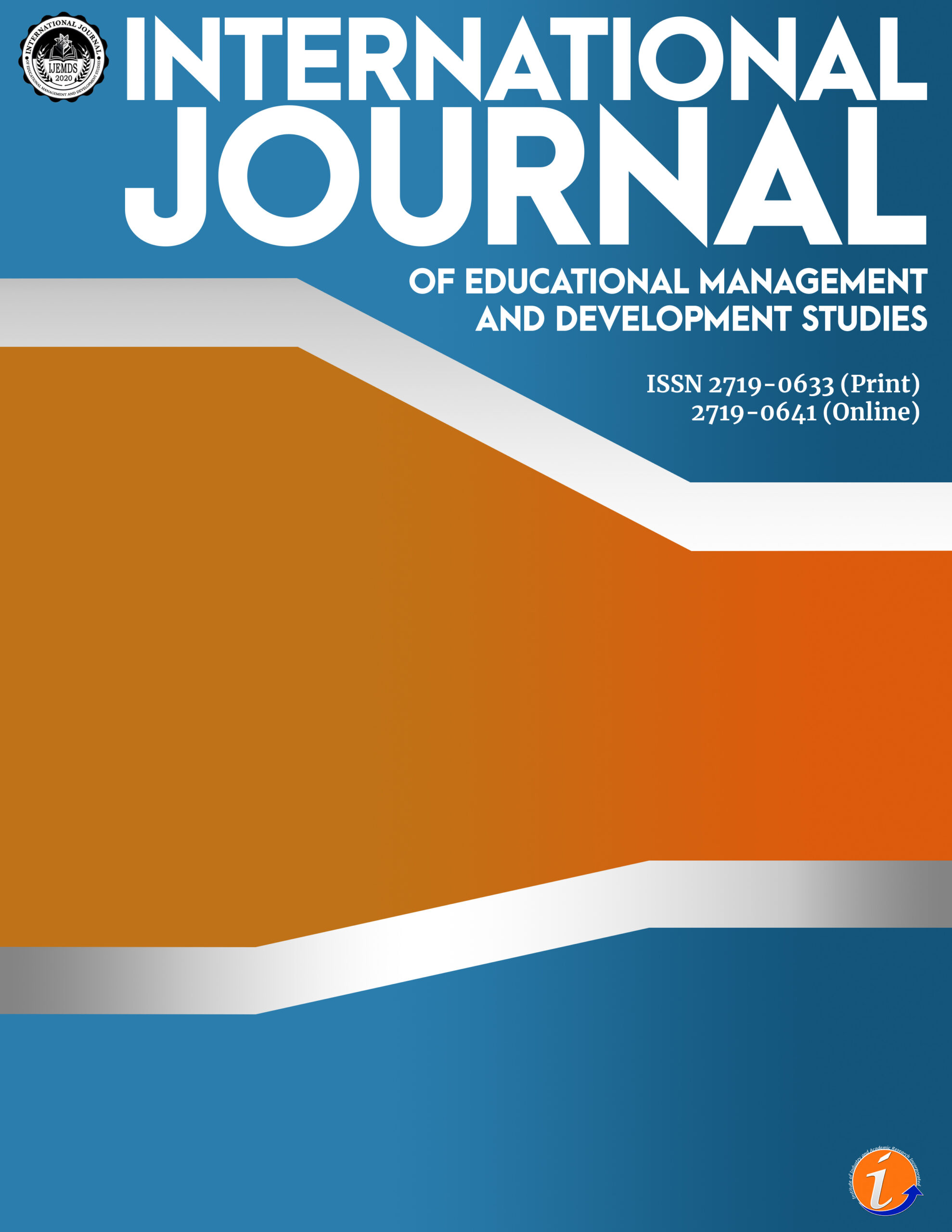Teachers’ habitual tardiness poses the most problem to school managers anywhere in the world and has countless drawbacks. It is one of the main anomalies that have beset many South African public schools, deplorably substantial emphasis has been given to teachers’ absenteeism. Espousing a qualitative research approach, coupled with multiple case study design, this enquiry aimed to explore how School Management Teams (SMTs) effectively manage teachers’ habitual tardiness and come up with strategies to protect scheduled teaching time. Data was collected through face-to-face interviews and the review of documents. Data was analysed with the employment of Inductive Thematic Analysis (ITA) method embedded within the moral leadership framework. The purposefully selected sample comprised seven SMT members from three public secondary schools in Soshanguve township, South Africa. The findings revealed that habitual tardiness by same teachers is a problem in all the three schools, whereby missing the first period was a daily occurrence. The findings further painted a bleak picture on the scheduled teaching time that is lost and usually unaccounted for. To effectively manage habitual tardiness, school managers are advised to implement and monitor the tardiness attendance register. It is further recommended that a roundtable discussion be held amongst basic education stakeholders for the introduction of the biometric log-in system. To protect scheduled teaching time, the streamlining of the school timetable is proposed.
habitual tardiness, management, scheduled teaching time, South Africa
Michael Moreti Mahome. Corresponding author. Post-Doctoral Fellow, Department of Primary Education; School of Education, Faculty of Humanities, Tshwane University of Technology, South Africa. Corresponding email: mahomemike15@gmail.com
Lydia Kgomotso Mphahlele. Senior Lecturer. Associate Professor. Department of Primary Education; School of Education, Faculty of Humanities, Tshwane University of Technology, South Africa. Email: mphahleleLK@tut.ac.za
“All authors equally contributed to the conception, design, preparation, data gathering and analysis, and writing of the manuscript. All authors read and approved the final manuscript.”
No potential conflict of interest was reported by the author(s).
This work was not supported by any funding.
Abadzi, H. (2009). Instructional time loss in developing countries: Concepts, measurement, and implications. The World Bank Research Observer, 24(2), 267–290. https://doi.org/10.1093/wbro/lkp008
Adegunju, K.A., Ola-Alani, E.K., & Agubossi, L.A. (2019). Factors responsible for students’ lateness to school as expressed by Nigerian teachers in elementary schools. Mimbar Sekolah Dasar, 6(2), 185. https://doi.org/10.17509/mimbar-sd. v6i2.17040
Berreth, D., & Berman, S. (1997). The moral dimensions of schools. Educational Leadership, 54(8), 24-27. https://www.bing.com/ck/a?!&&p=476d6ce742eed123Jml
Burns, J.M. (2003). Transforming leadership: A new pursuit of happiness. New York: Atlantic Monthly Press.
Burns, J.M. (2007). The structure of moral leadership: Leadership. In: Zimmerli, W.C., Holzinger, M., Richter, K. (eds) Corporate Ethics and Corporate Governance. Springer, Berlin, Heidelberg. https://doi.org/10.1007/978-3-540-70818-6_7
Butakor, P. K., & Boatey, B. O. (2018). Supervision of teacher’s punctuality and students’ attendance in senior high schools: Exploring the views of students. Journal of Education and Practice, 9(30), 71-79.
Braun, V., Clarke, V., Hayfield, N., Terry, G. (2019). Thematic analysis. In: Liamputtong P. Handbook of Research Methods in Health Social Sciences. Springer; Singapore.
Byrne, D. (2021). A worked example of Braun and Clarke’s approach to reflective thematic analysis, Quality & Quantity, 56, 1391-1412. https://doi.org/10.1007/s11135-021-01182-y
Campbell, R., Goodman-Williams, R., Feeney, H., & Fehler-Cabral, G. (2020). Assessing triangulation across methodologies, methods, and stakeholder groups. American Journal of Evaluation, 41(1), 125-144. https://doi.org/10.1177/1098214018804195
Cheng, B.S., Chou, L.F., Wu, T.Y., Huang, M.P., & Farh, J.L. (2004). Paternalistic leadership and subordinate responses: establishing a leadership model in Chinese organisations. Asian J. Soc. Psychology. 7, 89-117. https://doi.org/10.1111/j.1467-839X.2004. 00137.x
Chujor, R.M. (2014). The conditions of learning (3rd edition). New York: Holt Rinehart and Winston.
Department of Basic Education (2022). Personnel administrative measures (PAM). G.N. 222 of 1999 published in Government Gazette No. 19767 dated 18 February 1999. As amended Government by Gazette No: 46879, 9 September 2022. Pretoria: Government Printers. https://www.bing.com/ck/a?!&&p=74132d8fc25ed71d
Employment of Educators Act 17 (1998). Policy Handbook for Educators. Education Labour Relations. South Africa: Education Labour Relations Council. https://www.bing.com/ck/a?!&&p=4baa94a230ea56dc
Fairholm, M.R., &Fairholm, G.W. (2009). Understanding leadership perspectives: Theoretical and practical approaches. New York, NY: Springer.
Flick, U. (2014). The SAGE handbook of qualitative data analysis. London: Sage.
Gabuza, S.R. (2015). Exploring school management teams’ approaches for managing teacher absenteeism in rural schools. Unpublished Master’s Dissertation, University of Kwa-Zulu Natal, South Africa.
Gelb, A, & Clark, J. (2013). Identification for development: The biometrics revolution. Working Paper, Centre for Global Development 1800 Massachusetts Ave., NW Washington, DC 20036.
Gustafsson, M. (2017). Single case studies vs. multiple case studies: A comparative study. Academy of Business, Engineering and Science, Halmstad University, Halmstad, Sweden.
Hompashe, D. (2018). Instructional leadership and academic performance: Eastern Cape educators’ perceptions and quantitative evidence. A working paper of the department of economics and the bureau for economic research at the University of Stellenbosch, South Africa.
Karamperidou, D., Brossard, M., Peirolo, S., & Richardson, D. (2020). Time to teach teacher attendance and time on task in Eastern and Southern Africa, UNICEF Office of Research-Innocenti. https://www.unicef-irc.org/publications/1148-time-to-teach-teacher-attendance-and-time-on-task-in-eastern-and-southern-africa.html
Kasu, P.A. (2014). Challenges in controlling lateness, absenteeism, and labour turnover. A case study of Christ Apostolic University College, Kwadoso, Kumasi. Unpublished Master’s thesis, Kwame Nkrumah University of Science and Technology, Ghana.
Leedy, P. & Ormrod, J. E. (2019). Practical research: Planning & design. (12th ed.) Upper Saddle River: Pearson Merrill Prentice Hall. https://doi.org/10.37074/jalt.2018.1.2.15
Macfarlane, D. & Chaykowski, K. (2011). Bunking teachers fail learners. Mail and Guardian, 21.
Maile, S. & Olowoyo, M. (2017). The causes of late coming among high school students in Soshanguve, Pretoria, South Africa. Pedagogical Research, 2(2), 04. https://doi.org/10.20897/pr/80951
Mampane, K.B. (2013). Educators’ experiences and perceptions of teacher absenteeism. Unpublished Master’s dissertation, University of Pretoria, South Africa.
Mashaba, E.K. & Maile, S. (2013). The cost of teacher absenteeism in selected Soshanguve Township schools, South Africa. International Journal of Arts and Entrepreneurs, 3(1): 171-197.
Matthew, I.A, & Omotayo, L.J. (2020). Factors influencing lateness of teachers in public schools in Ondo State, Nigeria. Asian Journal of Sociological Research, 3(1): 46-57.
Mthombeni, J.S. (2010). Teacher absenteeism in schools within the Ekurhuleni South District Education Department. Unpublished Master’s dissertation, University of Johannesburg, South Africa.
Nadu, T. (2019). Teacher comes late to school, suspended. https://timesofindia.com/city/puducherry/teacher-comes-late-to-school-suspended/amp_articleshow/71924899.cms
NEEDU (2013). NEEDU National Report 2013: Teaching and learning in rural primary schools. Pretoria: National Education Evaluation and Development Unit.
NEEDU (2018). NEEDU Policy Brief 1- 2018: Use of teaching time. Time-on Tsk: Maximising student learning time and minimising downtime. Pretoria: National Education Evaluation and Development Unit. https://www.studocu.com/en-za/document/university-of-south-africa/enforcement-by-forestry-officers/policy-brief-1-use-of-teaching-time/27482516
Nwaigwe, C.C. (2022). Target population, samples and sample selection. In: E.O, Adu., & C.I.O, Okeke, Fundamentals of Research in Humanities, Social Sciences and Science education. A practical step-by-step approach to a successful research journey. Van Schaick Publishers.
Onoyase, A. (2018). Principals’ perception of misconduct among secondary school teachers in Delta State: Implications for counselling practice. International Journal of Higher Education 7(5), 150-157. https://doi.org/10.5430/ijhe. v7n5p150
Sansaluna-Maulana, S. A., Aliman, B. D. S., & Ulangkaya, Z. K. (2021). Senior high school english teachers’ punctuality, attendance and students’ academic performance. Advances in Social Sciences Research Journal, 8(8). 564-570. https://doi.org/10.14738/assrj.88.10695
South African Government News Agency (2013). Motshekga moots biometric system for teachers. https://sanews.gov.za/south-africa/motshekga-moots-biometric-system-teachers
Spector, B. (2019). Moral leadership? Be careful what you wish for. Leadership, 15(1), 123-131. https://doi.org/10.1177/1742715017736659
Taylor, N. (2016). Jet education services. https://www.jet.org.za/about-jet/annual-reports/jet-ar-2016-proof-web-final.pdf/view
Tinab, M. (2014). Effects of educational supervision on students’ academic performance in Nadowli District in the Upper West Region of Ghana. The International Journal of Humanities & Social Studies, 2(6), 326-341.
West-Burnham, J. (1997). Leadership for learning: re-engineering ‘mindsets’. School Leadership and Management, 17, 231-243. https://doi.org/10.1080/13632439770069
Wijesiri, L. (2015). Punctuality and good attendance will have positive impact on workplace. Daily Mirror. https://www.dailymirror.lk/features/punctuality-good-attendance-will-have-positive-impact-on-workplace/185-22687
Cite this article:
Mahome, M.M. & Mphahlele, L.K. (2024). The effective management of teachers’ habitual tardiness: Protecting scheduled teaching time. International Journal of Educational Management and Development Studies, 5(4), 178-200. https://doi.org/10.53378/ijemds.353128
License:
![]()
This work is licensed under a Creative Commons Attribution (CC BY 4.0) International License.










